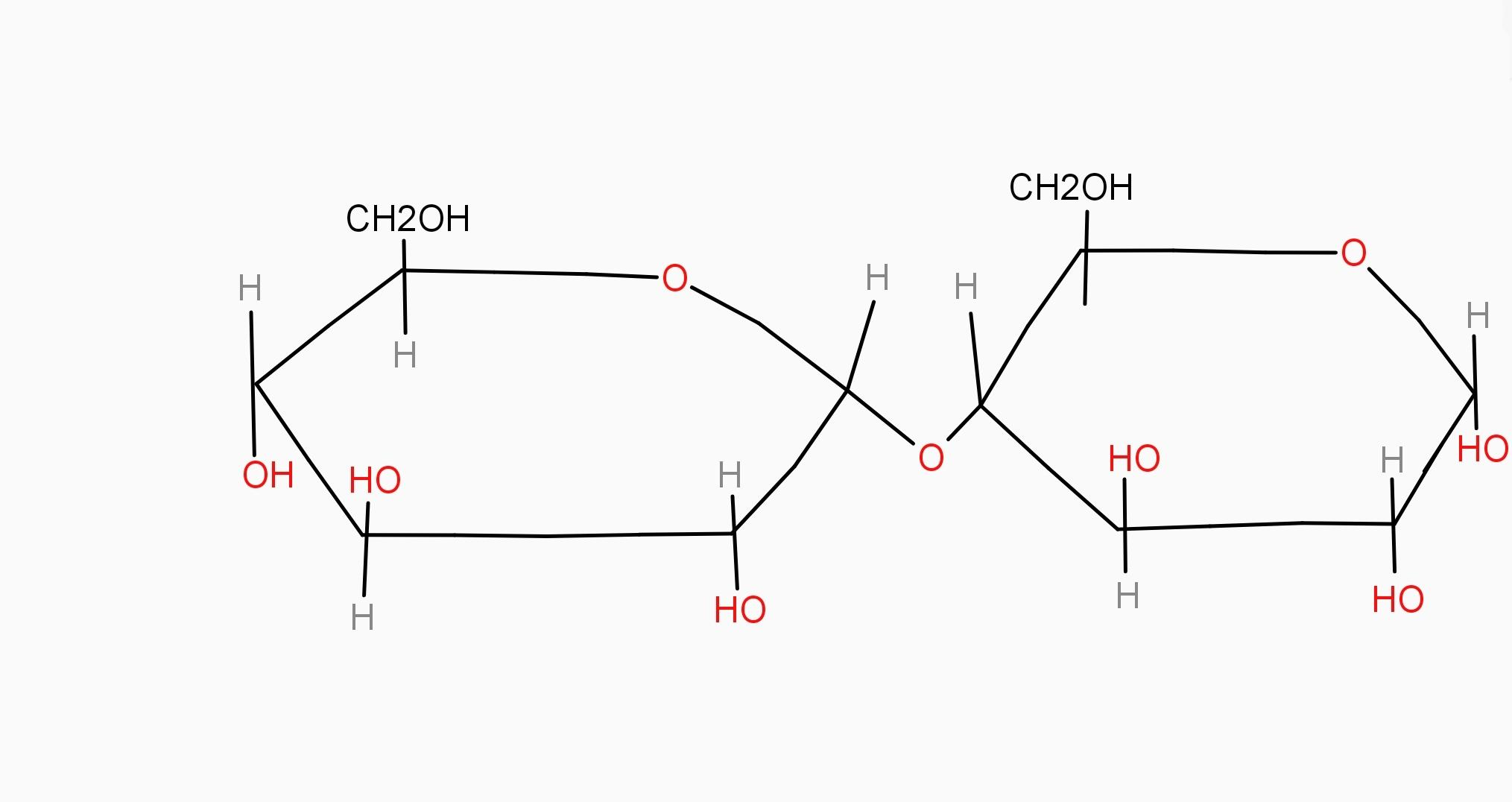
Answer
483k+ views
Hint: This molecule can exist in an open-chain and ring form. It is a primary source of energy for living organisms. It is naturally occurring and is found in fruits and other parts of plants in its free state.
Complete step by step answer:
Maltose is formed from two molecules of glucose. Those two molecules bond together and a water molecule is removed. Maltose is an intermediate product of starch hydrolysis and doesn’t appear to exist freely in nature.
Maltose is a disaccharide with an alpha glycosidic linkage between two D glucose molecules. The carbon atoms undergo mutarotation, which results in an equilibrium mixture of alpha and beta molecules.
Let us see the reaction.

As we know, maltose is a carbohydrate and it is disaccharide and it contains D-glucose which is an example of monosaccharide, due to which when dilute hydrochloric acid reacts with maltose, hydrolysis process happens and gives only D-glucose as compound.
D-glucose is a short name given to dextrorotatory glucose. It is one of the stereoisomers of glucose and it occurs in plants as a product of photosynthesis. In humans, it is present in blood with a clinical value of 75-115 mg/dl.
Hence, the reaction of dilute HCl with maltose gives D-glucose. Therefore, option A is the required answer.
Note: Glucose can form formaldehyde under abiotic conditions, so it may well have been available to primitive biochemical conditions. In respiration, through a series of enzyme-catalyzed reactions, glucose is oxidized to eventually form carbon dioxide and water, yielding energy, mostly in the form of ATP.
Complete step by step answer:
Maltose is formed from two molecules of glucose. Those two molecules bond together and a water molecule is removed. Maltose is an intermediate product of starch hydrolysis and doesn’t appear to exist freely in nature.
Maltose is a disaccharide with an alpha glycosidic linkage between two D glucose molecules. The carbon atoms undergo mutarotation, which results in an equilibrium mixture of alpha and beta molecules.
Let us see the reaction.

As we know, maltose is a carbohydrate and it is disaccharide and it contains D-glucose which is an example of monosaccharide, due to which when dilute hydrochloric acid reacts with maltose, hydrolysis process happens and gives only D-glucose as compound.
D-glucose is a short name given to dextrorotatory glucose. It is one of the stereoisomers of glucose and it occurs in plants as a product of photosynthesis. In humans, it is present in blood with a clinical value of 75-115 mg/dl.
Hence, the reaction of dilute HCl with maltose gives D-glucose. Therefore, option A is the required answer.
Note: Glucose can form formaldehyde under abiotic conditions, so it may well have been available to primitive biochemical conditions. In respiration, through a series of enzyme-catalyzed reactions, glucose is oxidized to eventually form carbon dioxide and water, yielding energy, mostly in the form of ATP.
Recently Updated Pages
Class 10 Question and Answer - Your Ultimate Solutions Guide

Master Class 10 Science: Engaging Questions & Answers for Success

Master Class 10 Maths: Engaging Questions & Answers for Success

Master Class 9 Social Science: Engaging Questions & Answers for Success

Master Class 10 General Knowledge: Engaging Questions & Answers for Success

Master Class 10 Social Science: Engaging Questions & Answers for Success

Trending doubts
Pigmented layer in the eye is called as a Cornea b class 11 biology CBSE

Proton was discovered by A Thomson B Rutherford C Chadwick class 11 chemistry CBSE

What organs are located on the left side of your body class 11 biology CBSE

The lightest gas is A nitrogen B helium C oxygen D class 11 chemistry CBSE

How many squares are there in a chess board A 1296 class 11 maths CBSE

What are ekaboron ekaaluminium and ekasilicon class 11 chemistry CBSE




